ITALY
Milan

Milan
Milan
Milan is one of the most important and stylish cities in Italy. The bustling business city of Milan, Italy's second city, is home to many important financial institutions and the Italian stock exchange. Milan is also known around the world for its fashion and design. Shopping is best in the Golden Quadrangle, the Quadrilatero d'oro, where the streets are filled with leading fashion houses.
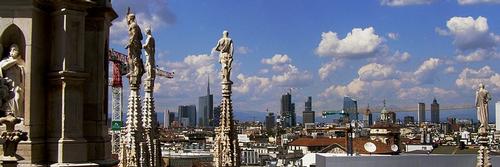 Milan SkylinePhoto: Nicolago CC 3.0 Unported no changes made
Milan SkylinePhoto: Nicolago CC 3.0 Unported no changes made
Location
Milan is located in the Po plain in northern Italy, where the rivers Ticino and Adda also flow and near the foothills of the Alps. Milan has an area of 181 km2 and is 122 meters above the sea level. Milan is the capital of Lombardy.
Weather
Milan's climate is typically Mediterranean, with high temperatures and sunny days in the summer and colder, more humid weather in the winter. July and August are usually very hot with temperatures around 30° C. Spring and autumn have the most pleasant weather conditions in Milan. The weather can be unpredictable in winter from November to February, but it is a quiet time to visit the city.
History
Around 500 BC, the Celtic tribe Insubi inhabited Milan and the surrounding region. In 222 BC, the legions of Rome conquered Milan and the Celtic tribes were defeated. Milan became the capital of the Western Roman Empire and the residence of the emperor. It became, after Rome, the most important city in the west. In 452 Atilla the Hun captured the city. After the Huns followed the Ostrogoths and the Lombards. Ultimately, Charlemagne restored order. He occupied the city in 774 and added it to the Frankish Empire.
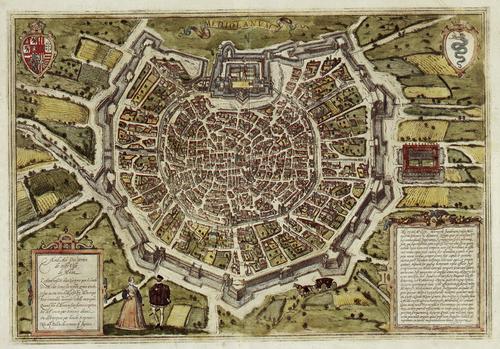 Milan at the end of the 16th centuryPhoto: Public Domain
Milan at the end of the 16th centuryPhoto: Public Domain
The most important factor for the prosperity of the city was its trade. In the time of the Renaissance, dukes of the prominent Visconti and Sforza families successively owned the city. Milan was transformed into a mighty metropolis, with its Castello Sforzesco (Sforza Castle) and the Ospedale Maggiore. The Duomo dates from this time. Under Ludovico Sforza, Milan's importance to the silk industry grew. Leonardo da Vinci came to the court of Ludovico and the city then became a leading center of the country's art and culture.
Milan became the capital of the Italian Republic in the time of Napoleon, who was crowned King of Italy and Milan in 1805. The opera La Scala was built at that time and Giuseppe Verdi performed here. King Vittorio Emmanuele II expelled the Austrians who briefly held Milan in 1859 and integrated Milan into the new Kingdom of Italy. In commemoration of this king, the beautiful Galleria Vittorio Emmanuele II was built in the center of Milan.
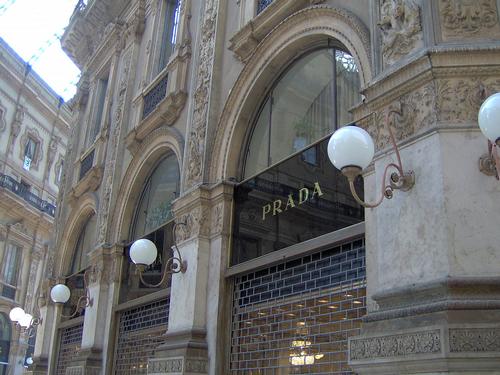 Milan PradaPhoto: Per Andersson CC 3.0 Unported no changes made
Milan PradaPhoto: Per Andersson CC 3.0 Unported no changes made
In 1919 Mussolini founded his fascist party in Milan. During the Second World War, Milan suffered severe damage from British and American bombings. During the economic miracle of the 1950s and 1960s, a wave of internal immigrants from southern Italy flooded Milan. Since the 1980s, Milan has been known as a major exporter of textiles and various clothing brands. Milan is Italy's fashion city with internationally renowned brands such as Armani, Versace, Prada and Dolce & Gabbana.
Sights
Most of the main attractions in Milan are in the center and there is plenty to see.
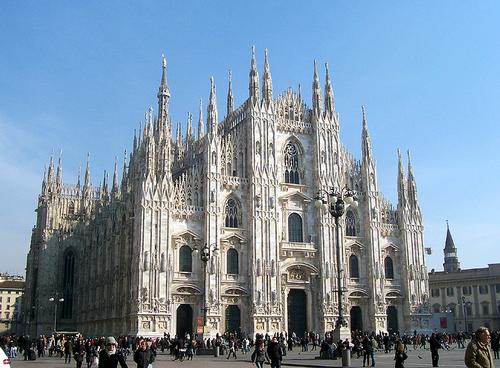 Milan DuomoPhoto: MarkusMark CC 3.0 Unported no changes made
Milan DuomoPhoto: MarkusMark CC 3.0 Unported no changes made
The most important church is the enormous Duomo, the fourth largest cathedral in the world, which was built for about four centuries. Construction of the great cathedral of Milan started in 1386 and it is the third largest church in the world, after St. Peter and the Cathedral of Seville. Although the church was consecrated in 1418, the church was not finished until the 19th century. The dark interior is home to a lot of history and there are roof terraces, with a beautiful panoramic view of Milan. Of particular note are the beautiful stained glass windows, a large number of statues, the Holy Nail of the Cross and the paintings of many leading artists. The nearby Duomo towers stand high above the main square and are named after the church.
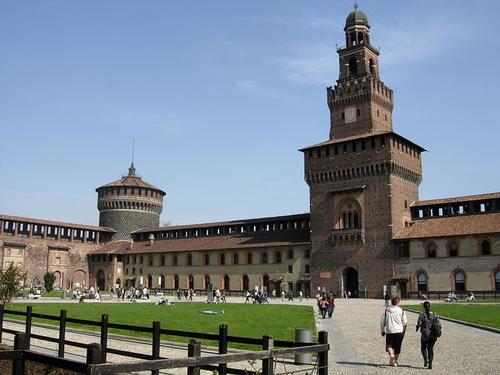 Sforza Castle MilanPhoto: Fishponds1981 CC3.0 Unported no changes made
Sforza Castle MilanPhoto: Fishponds1981 CC3.0 Unported no changes made
The Sforza Castle was built in 1360. It is located on the northwest side of the city center at Parco Sempione. The castle was later expanded and renovated. In the mid-15th century, the castle was converted into a beautiful Ducal Palace by the Italian condottiero Francesco Sforza. It is one of the most important Renaissance sights that can still be seen in the city. In the following centuries, the fort was further modified, restored and even used by the army. World War II caused much damage and the future of the castle was uncertain, but a major restoration project has allowed the Castello Sforzesco to be enjoyed again by future generations. Several museums and galleries are located on the property, visitors can view ancient frescoes in the ducal chapel. There is a painted ceiling by Da Vinci and Michelangelo's last sculptures, which are unfinished.
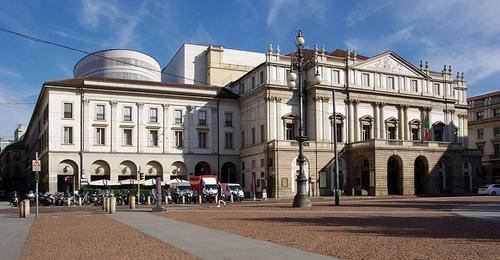 Scala MilanPhoto: Jakub Halun CC 4.0 International no changes made
Scala MilanPhoto: Jakub Halun CC 4.0 International no changes made
The Scala (Opera House) was completed in 1776 and built by Giuseppe Piermarini on the central site of Santa Maria della Scala, an old church from 1381. In 1943 it was heavily bombed and rebuilt three years later. Highlights include the Museo del Teatro (theater museum), which was founded in 1913. The traditional opening night of the opera season takes place on December 7, on the feast day of Sant'Ambrogio, the patron saint of Milan. The acoustics are particularly highly regarded.
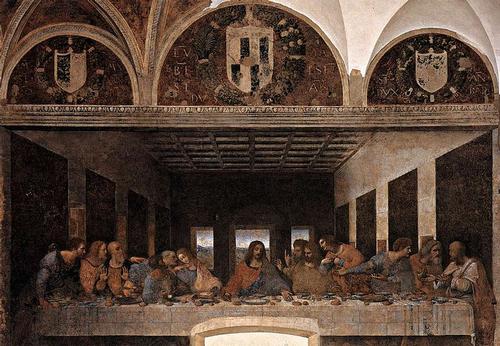 Last Supper Leonardo da Vinci MilanPhoto: Public Domain
Last Supper Leonardo da Vinci MilanPhoto: Public Domain
The Santa Maria delle Grazie is a beautiful church and monastery. The church dates from 1463. In 1492, the church was radically renovated and the fresco 'The Last Supper' by the famous painter Leonardo da Vinci was placed inside its walls. In 1943, the church suffered heavy damage from Allied bombing, but luckily da Vinci's masterpiece remained undamaged.
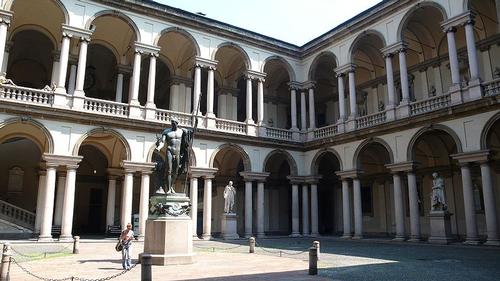 Brera MilanPhoto: Welleschik CC 3.0 Unported no changes made
Brera MilanPhoto: Welleschik CC 3.0 Unported no changes made
The Brera Art Gallery in north-east Milan is home to one of Italy's most important art collections. Housed in a late 16th-century palazzo, the museum has 31 rooms, filled with great works of art. Many masterpieces by leading Italian artists are showcased here, including works by Raphael, Caravaggio and Mantegna.
The Ambrosiana Pinacotheque in the center of Milan was created to inspire and encourage emerging Italian artists. Over the years, the art collection has grown, thanks to many generous private donations. Highlights include a wood panel by Leonardo da Vinci, sculptures, portraits, and work by leading artists such as Botticelli and Caravaggio.
Tips
One of the most famous streets in Milan is Via Montenapoleone, where many of the leading Italian and international fashion designers are concentrated. Throughout the year there are plenty of exciting and important fashion shows in the city, showcasing the latest collections.
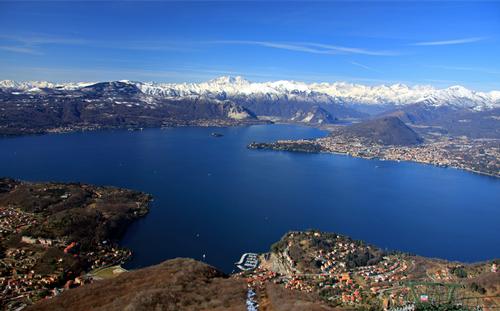 Lagio MaggiorePhoto: Alessandro Vecchi CC 3.0 Unported no changes made
Lagio MaggiorePhoto: Alessandro Vecchi CC 3.0 Unported no changes made
Outside of Milan there are many beautiful and unforgettable lakes with excellent visitor facilities including shops, restaurants and cafes. The most popular lakes in this region are Lake Maggiore, Lake Como and Lake Garda, the three largest lakes in Italy.
Useful links Milan
BBC Country ProfilesWorld Fact Book Explore all Countries
How to call
Last updated November 2025
Copyright: Team - The World of Info